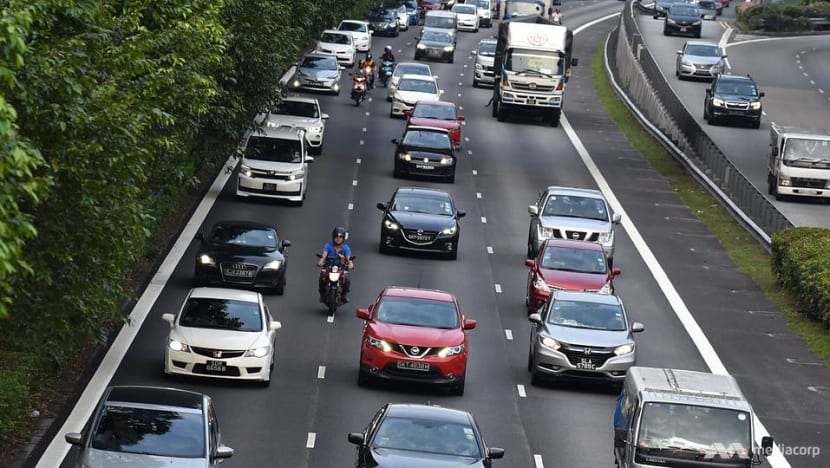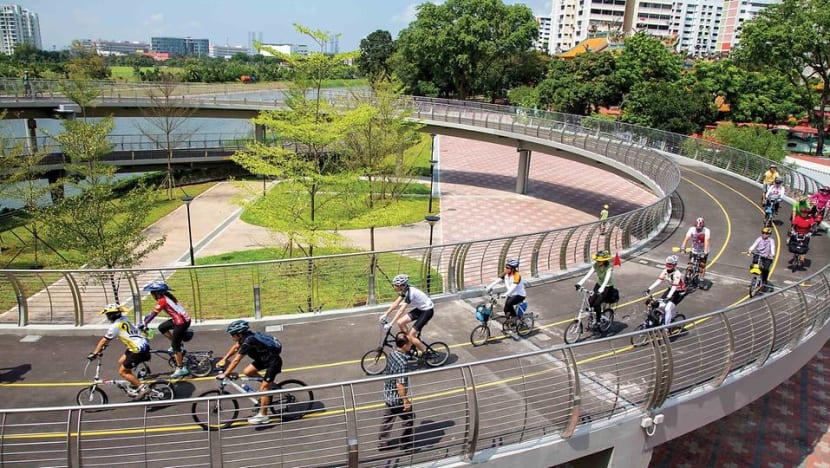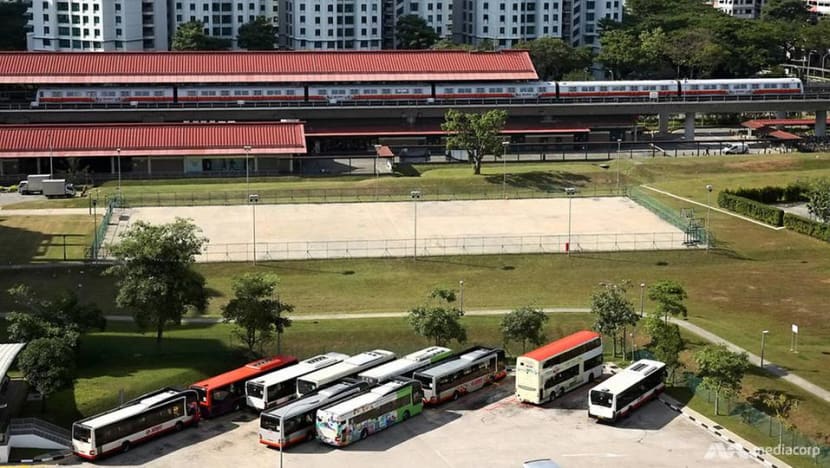commentary Commentary
Commentary: What’s next for e-scooters after the footpath ban?
The new law may keep pedestrians safe from e-scooters, but does not negate the need for investment in critical transport infrastructure going forward, says Julienne Chen.

A man riding an e-scooter in Singapore.
SINGAPORE: The ban on e-scooters from footpaths was announced suddenly. But let us be honest, it was a long time coming.
The warning signs were there: Fights and accidents playing out in full view for all to see and judge, and efforts at mediation were insufficient to calm the tension hanging in the air, too thick to be tenable over the long term.
The co-habitation arrangement between pedestrians and e-scooters wasn’t going to stand the test of time.
AN OVERDUE BREAK–UP
Now that the break-up has happened, e-scooters have been ordered to pack their bags and move out.

As with most break-ups, there is also a lot of finger-pointing going on – towards everyone from the reckless riders down to the sellers of non-compliant e-scooters. Even the graciousness and kindness of Singaporeans, as a whole, is on trial.
READ: What happened to cautiousness and graciousness on the roads? A commentary
READ: E-scooter ban on footpaths – here’s a list of those who got off scot-free, a commentary
Interestingly, there is one factor that seems to be flying under the radar despite the central role it has played in the drama: The lack of sufficient infrastructure.
THE GOOD NEWS? NOT A COMPLETE BAN
In their announcement, the Singapore Government did not impose a full ban on e-scooters. They are still able to use dedicated cycling paths and the Park Connector Network.
The Government also stated that they would construct approximately an additional 310km of such pathways, primarily in intra-town networks (i.e., to connect to local destinations within neighbourhoods), by 2025 – creating a total of approximately 750km of pathways that e-scooters can avail themselves of.
This is approximately 13 per cent of the existing network of 5,500km of footpaths, and less than 8 per cent of the 9,405km of vehicular road lanes.

A GOOD COMPROMISE?
On the face, this sounds like a good compromise. Indeed, e-scooters never belonged on a footpath to begin with.
Transportation modes that travel at vastly different speeds have almost always been separated from each other for reasons of efficiency, speed and, most of all, safety.
It is why separated bicycle paths are still the gold standard for transportation-forward cities around the world.
A goal of 310km of additional pathways in six years will be a good contribution, and well ahead of many other cities.

But Singapore is not just any other city. It is a city that prides itself on being fast, efficient, effective and inventive. The home of the Jewel, Marina Bay Sands and a wide array of other impressive high budget engineering feats that have literally moved earth.
IMAGINE THE WORLD’S MOST IMPRESSIVE TRANSPORT INFRASTRUCTURE
What could happen if we were to apply that ingenuity to creating the world’s most impressive infrastructure – not only for bicycles, but for e-scooters, hover boards, unicycles, skateboards and other modes of transport that are too fast for a footpath and too slow for a roadway?
Indeed, infrastructure for these emerging forms of transportation is so new that there is not even consensus on what to call it.
I have seen terms including “clean paths,” “green paths,” “third paths,” and an array of other path-isms.
This is because it seems counter-intuitive to call something a bicycle path when bicycles may not even be its dominant user. But it is better than the tongue twister: “Bicycles, e-bikes, e-scooters, PMDs and other emerging forms of low-impact transport.”

For the sake of simplicity, I’ll call them “car-lite modes”.
REDESIGNING SINGAPORE’S CAR-LITE PATHS
We are in new territory, and this presents a critical moment to consider how to successfully integrate these car-lite modes into the city.
The demand is now proven, and it is waiting for the infrastructure to catch up to allow it to thrive. This is where I hope we can transfer our energy to next, and with speed.
This time would be well spent rethinking how to create great, intuitive infrastructure for car-lite modes. A well-considered design has the ability to help reconfigure the relationships we have with one another on the road.

To create a truly multi-modal transportation network, it will not be enough to simply widen existing footpaths in neighbourhoods.
We need to consider everything from how different car-lite modes interact with one another within the path, to how the paths interface with pedestrians, cars, buses, intersections, bus stops, footpaths and more.
Further, we need to look at how to create linkages not only within towns, but across the city to allow people to get to where they want to go safely, comfortably and easily.
READ: Can we co-exist with PMDs? Yes, but we need to take a different path, a commentary
READ: Walking the NParks 36km Coast-to-Coast trail: Worth the effort?
Even on the existing Park Connector Network, there are a number of potential design improvements that could enhance its appeal.
It is great to have a dedicated recreation pathway, but many sections of it still require significant effort to use including navigating overhead bridges, busy traffic intersections with long signal wait times, steps, narrow shared footpaths that snake around busy bus stops, unsigned detours around construction sites and unclear entrance and connection points.

Applying intuitive and user-friendly design to these types of infrastructure will elevate Singapore to the next level of transport, opening a whole new range of mobility options that can change the way that we see, move within and interact with the city.
DISRUPTIVE INNOVATION NEEDED
To create a diversified and future-proof transportation network, it is unlikely that incremental improvements will be sufficient. We need disruptive innovation.
Industry will continue to introduce new innovations with different modes of transport.
If the Government can look towards innovation on the side of the design and infrastructure, building upon all that we have experienced in the past two years, I am optimistic that we can reintroduce car-lite modes to the city, with the right conditions to set it up for success.
Julienne Chen is a research fellow at the Lee Kuan Yew Centre for Innovative Cities at the Singapore University of Technology and Design, where she focuses on urban processes and systems.














